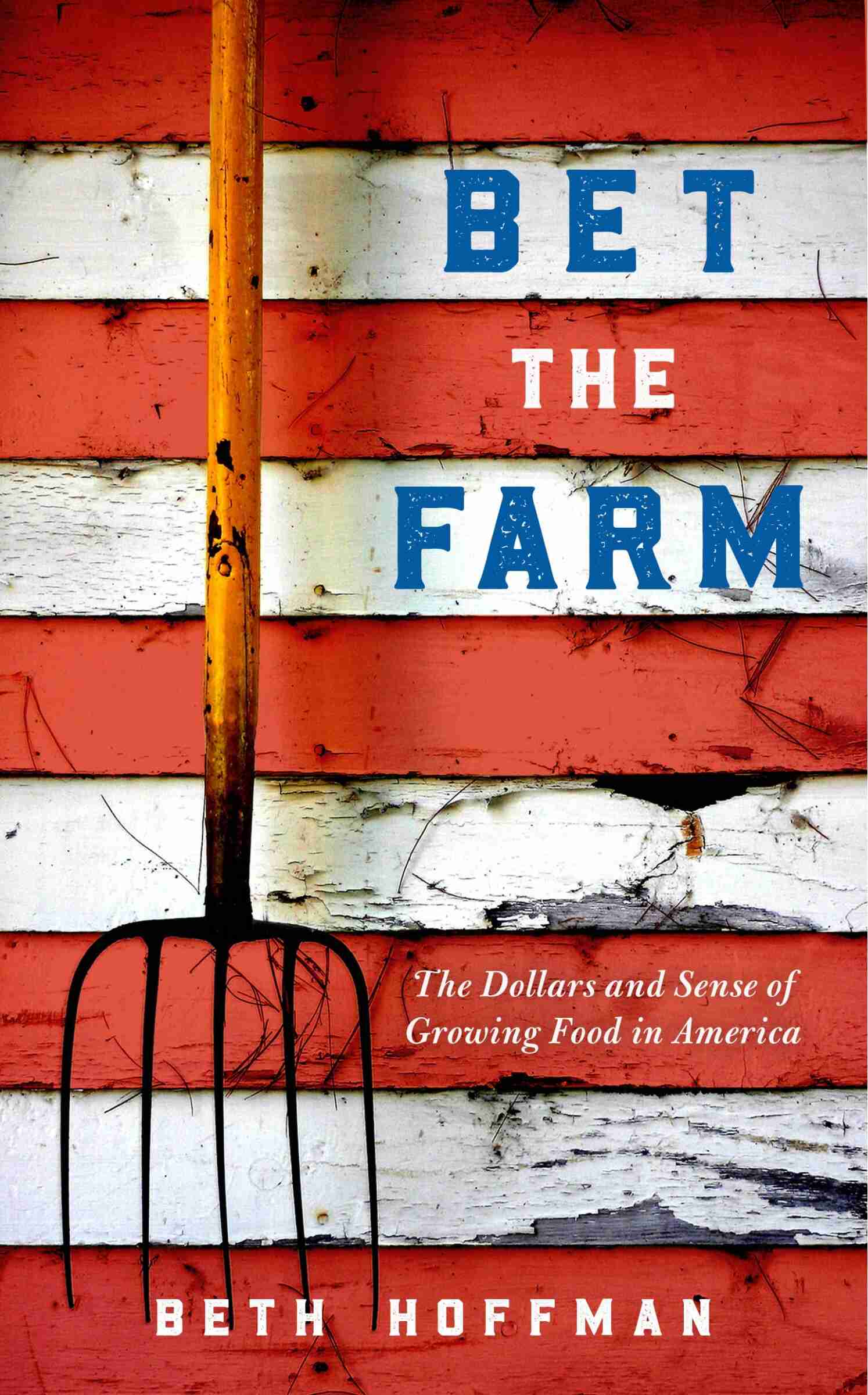Republished with permission from Governing Magazine, by Clay S. Jenkinson
Three years ago, Beth Hoffman left her career as a college professor and journalist in San Francisco for the life of farming. She and her husband, John Hogeland, headed to Iowa with $19,000 to get them started farming and a vague and ambiguous plan to take over as the fifth generation on his family’s 530-acre farm.
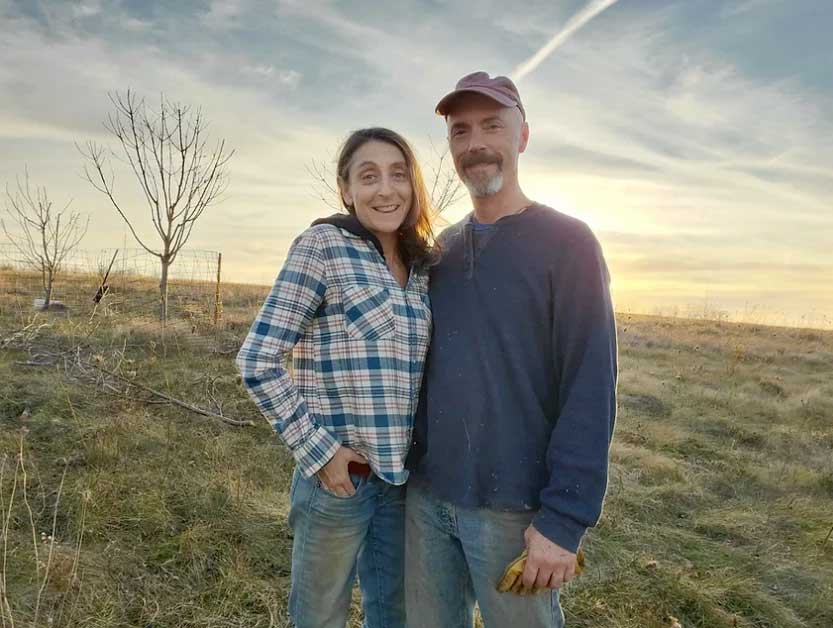
Beth Hoffman and John Hogeland moved from San Francisco to the Whippoorwill Creek Farm in 2019. John is the fifth generation Hogeland to farm this land in Iowa. (iowa-farm.com)
The simple life, however, turned out to be not so simple. “Instead of a romantic life of growing tomatoes and raising happy cows,” she writes, “farm life is actually a job full of spreadsheets, receipts, and file folders.” The public, she eventually realized, is similarly confused and uninformed about the realities of farming. Moreover, our existing agrarian myths serve mostly to pit farmers against each other while trapping them in endless cycles of debt and self-exploitation.
Hoffman had worked for 20 years as a journalist covering food and agriculture. Her work has been aired and published on NPR’s Morning Edition, The Guardian, The Salt, Latino USA, and the NewsHour.
Now, three years into her new life, Hoffman has published Bet the Farm: The Dollars and Sense of Growing Food in America, her attempt to not only tell her own story, but to talk frankly about the realities of farming. “Farmers can make a difference only if they can make a living,” she says in her introduction, something that she believes is possible, but now knows is not easy. Hoffman recently talked about farm life and her attempt to make a difference in the lives of farmers with Governing Editor-at-Large Clay Jenkinson.
This interview has been edited for clarity and length.
Regenerative Agriculture: More Than a Catch Phrase
Governing: When you and John took over his family farm, you had to sell your father-in-law on a number of things, including your transition to regenerative agriculture. How does he see that now?
Beth Hoffman: Initially he was amazed at how much work we were doing. He saw us out moving cattle every day, and he questioned whether things were really going to pan out and make money. But then in this last year, when we had a bit of a drought, he got to see how all of our neighbors with conventionally grazing cattle ran out of grass. They were feeding with hay for months, but we still had grass everywhere. Lots of it. That’s partly because we move cattle so the grass can regenerate, but it’s also because we’re not trying to pack on cattle.
Governing: Do you get together with those neighboring farmers to share ideas and talk about best practices?
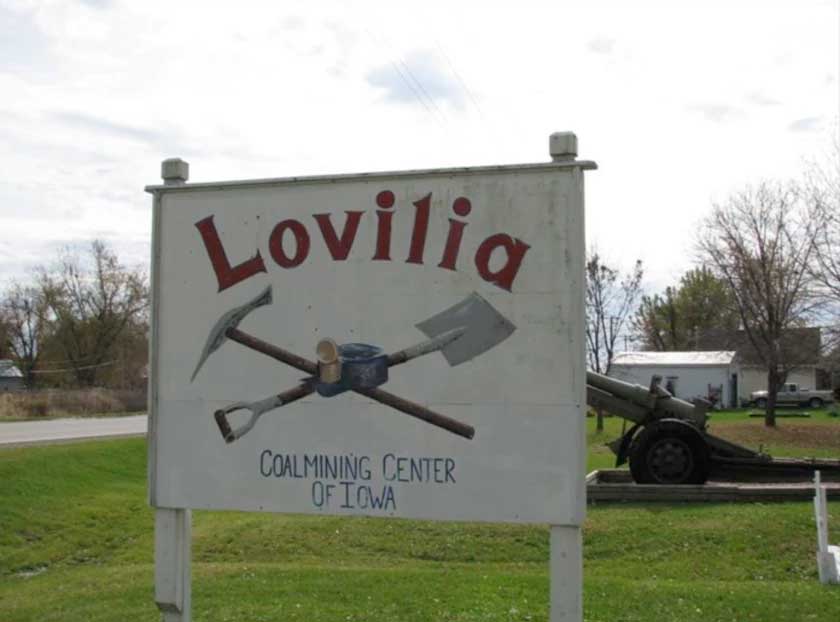
Welcome sign to the nearby town of Lovilia, Iowa. (waymarking.com)
Beth Hoffman: For us, there’s not a lot of social interaction. There are not a lot of places to gather, especially with the pandemic. Unless we go to the same church, we don’t see a lot of neighbors to have those conversations. You hear what you hear through seed and equipment dealers. It’s a very hard thing. I don’t think our neighbors even know we’re doing things differently. They don’t know the details at all. But the farmers unions in some states are quite vibrant. I’m on the board of the Iowa Farmer’s Union, and it’s a tight-knit and dedicated group of people. Our board is really high functioning, and people are very involved. There’s a lot of support, but it’s difficult.
Governing: If an average Iowa farmer is confronted with the idea of regenerative agriculture, might they respond by saying, “My production is good. My land is producing giant yields of corn. Why do I need to make changes?”
Beth Hoffman: That’s why the book avoids using the phrase, “The food system is broken.” It’s one of the catch-all phrases that people throw around when they’re talking about sustainability, but it’s a difficult argument to make to people who can go to the supermarket and get almost anything they want, anywhere they want. When you can get an avocado in deep rural America in February, how can the system be broken? So I’m a big advocate of saying, “Let’s talk about what we’re talking about instead of just throwing around terms.” It’s the same with regenerative agriculture. We have to be very clear. The term can be used by anybody. Cargill talks about regenerative agriculture all the time — arguably they’re making more concrete progress in getting people to use cover crops than we do with our kind of preaching to the choir — so it’s difficult.
Farmers Are Experts in Their Fields
Governing: Does that tendency of corporate capitalism to co-opt and debase these terms make it hard to distinguish something that is truly regenerative from something that is just another name for the traditional approach?
Beth Hoffman: It does. We have to understand why people are doing things the way they are in order to find solutions that fit. We cannot just demonize and say things like, “Farmers are just uneducated minions taught by Big Ag to practice conventional agriculture. If they knew better, they’d be doing sustainable agriculture.” That’s actually not true. There are very clear economic reasons why people are growing corn, such as how much time you put in versus how much money you make. It’s a system that exists because farmers have to work other jobs and do other things on the farm, and they can grow acres of corn with a minuscule amount of time. We have to know the root of why people do things before we can address the possibility of alternatives.
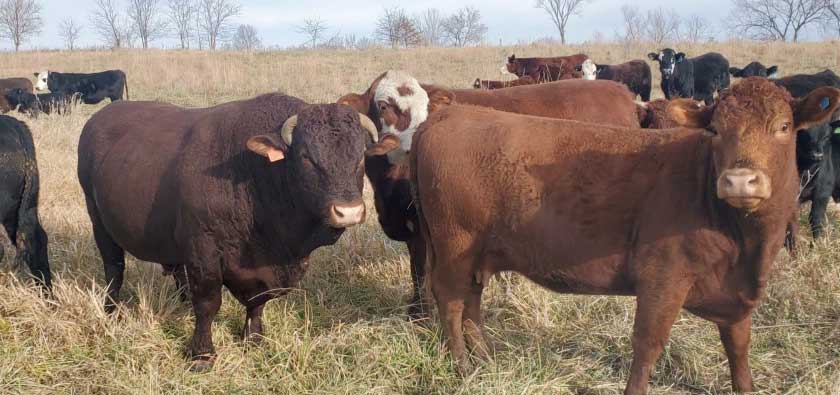
According to its website, “Whippoorwill Creek Farm raises cattle and goats on pasture for their entire lives. The animals are moved daily to ensure the best possible nutrition for them and the least environmental impact on the land.” (iowa-farm.com)
Governing: When you moved to the Midwest, you had a farm to go to. You had to invest in that farm, but you didn’t have to buy it. If you don’t have the equity and you don’t have the land, but you still want to live this dream, how can you do it in the United States?
Beth Hoffman: I tried to make the element of privilege very clear throughout the book. And it wasn’t just that we were lucky. The land ownership story is that people like us, people like John’s dad, were afforded bank loans and U.S. Department of Agriculture (USDA) programs that helped families succeed for five generations on the land, helped them gain wealth and keep that wealth in the family. Much of the American public has not been afforded those same kinds of privileges. There are people who want to farm but have no access to land. There’s farmland in Iowa going for $12,000 to $18,000 an acre, which is not a reasonable cost to start farming.
Farming Is Not Romantic but Access to Land Is Privilege
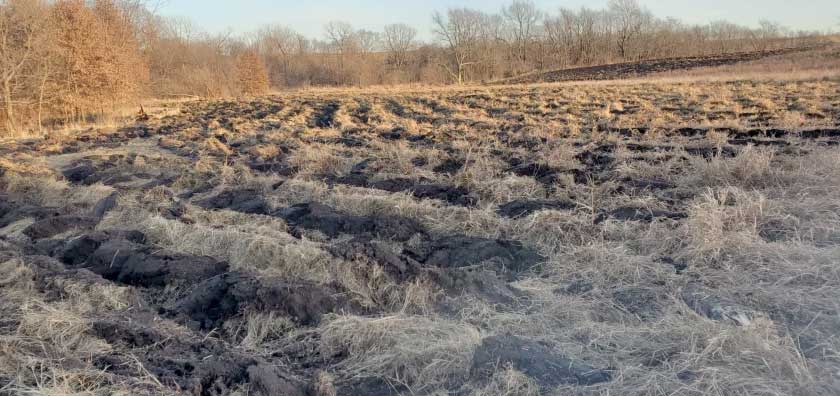
One of two fields on the Whippoorwill Creek Farm where native prairie is being reintroduced under the US Department of Agriculture NRCS EQIP program (iowa-farm.com)
Another part of the problem is that people want to get into agriculture, but they want to get into agriculture in very specific places in the country. They want to be in the Hudson Valley. They want to be in Sonoma. Those are not practical places to start a farm with no money. Lots of places, like rural Iowa, are much more practical for starting out. There are groups like the Sustainable Iowa Land Trust (SILT) with land that has been donated. They’ve set up a system where you basically buy the buildings, and then you can build equity by owning the home and the barns. You don’t have to own the land. You’d have a very long-term lease, maybe 99 years, so that you have the security of being there for a long time. You can invest in it. You can do things like regenerative agriculture that take years to establish. So that’s one system. There’s definitely land available, though figuring out where it is can be a challenge.
Another problem is that people have been sold this very romantic vision of farming, the Joel Salatin model, where you do everything. You run yourself ragged. Studies show that those farms typically don’t charge enough for their products in relation to the amount that they’re actually laboring. It’s called self-exploiting. It’s much more reasonable to go in small and slow. Add things only when you know that you can actually handle it. Know that you’re going to need to keep your other job. And don’t raise things without having a market for them. Don’t take the view that if you grow it, buyers will come. A lot of times they don’t come. Start small.
Governing: You come across as very nonjudgmental in your book, but you do express some frustration with the USDA.
Beth Hoffman: There are so many different arms of the USDA, and things are not working in tandem. They are inhibiting actual change. I’d like to see that addressed. I’d also like to see more money for hiring. Our USDA office is completely overworked and unable to handle all that’s going on there. And climate change is impacting us all. We need to be spending money and time on research that’s going to help us make the necessary transitions. We have a system based on farm bills that have existed since the 1920s. It’s been overlaid and changed and morphed to the extent that staying current is very difficult for USDA employees. They’re trying to just deal with paperwork 90 percent of their time. We need frontline people who are out recommending new programs and pushing the envelope for every farmer. When you walk into the Farm Service Agency, the FSA folks already have your paperwork filled out. Many farmers don’t even know exactly what they’re signing up for. When they step up to that window, it would be nice just to have someone say, “Have you considered cover crops? We have experts right there that could come and talk to you.” That could make such a difference. But it’s asking overworked people to do a different kind of work, to find excitement in programs that often don’t sound very exciting. Maybe it’s leadership that we need at the USDA, leadership that gets people charged up and excited about their jobs.
Betting the Farm Is a High Stakes Gamble
Governing: Have there been times in the last few years where you’ve thought, “Man, this was not a great idea?”
Beth Hoffman: Numerous times. It happens when we go into the slightly larger towns in the surrounding area. I still get this, “Oh, we’re going to town,” sense of anticipation. Then we go, and there’s nothing really to look at. We end up at Walmart. That’s when it feels isolating. It’s not being on the farm. It’s the venturing out and realizing that there’s not much going on. The restaurants don’t serve anything that’s any different from every other restaurant. Just frozen food ordered from Sysco and thrown into the deep fryer. That’s when you think, “What am I doing?” But then I look through my rosy glasses and say, “Wow, there’s so much opportunity.” Everywhere we go, people want to talk about food. And not necessarily the well-educated, affluent, suburban city people that you imagine. People are just truly interested in food. They love to cook. John and I are both 53. If we have 10 or 15 more years to work, that’s a short window to really make change. We’ve come to feel that our biggest opportunity is to impact the food culture in the area, to make it a little bit more exciting, where maybe people are coming down from Des Moines and going on a nice gravel bike ride, and then coming by to have a burger and enjoy some music. Maybe we’ll offer cooking classes, even deer butchery. This is a huge hunting area. Those are things where we feel we could help push the envelope a little bit.
Harvesting Quiet
Governing: Have you learned anything about yourself in this process that you might not have expected?
Beth Hoffman: What surprised me is the quiet. I have to think that there are millions of people around the earth that don’t know that they need that level of quiet. Not quiet as in silence, but the quiet of birds and frogs and crickets. It’s at a level that you feel in your soul. There’s no other way to put it. You can feel it deep within your body and your mind. I was surprised by that. I thought it would be lonely and scary and isolated out here, but it’s not. It’s grounding.

Governing
Governing: The Future of States and Localities takes on the question of what state and local government looks like in a world of rapidly advancing technology. Governing is a resource for elected and appointed officials and other public leaders who are looking for smart insights and a forum to better understand and manage through this era of change.

